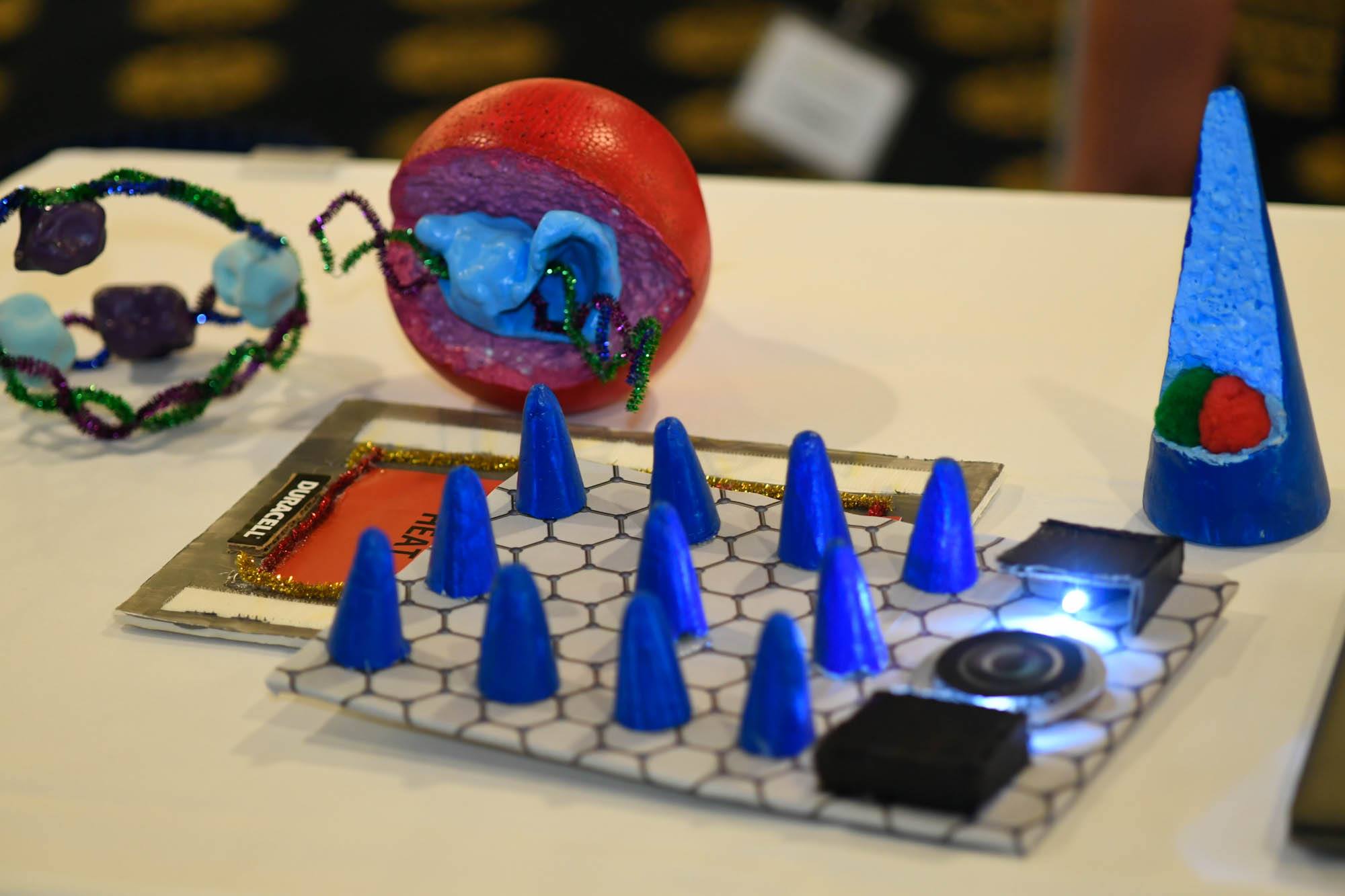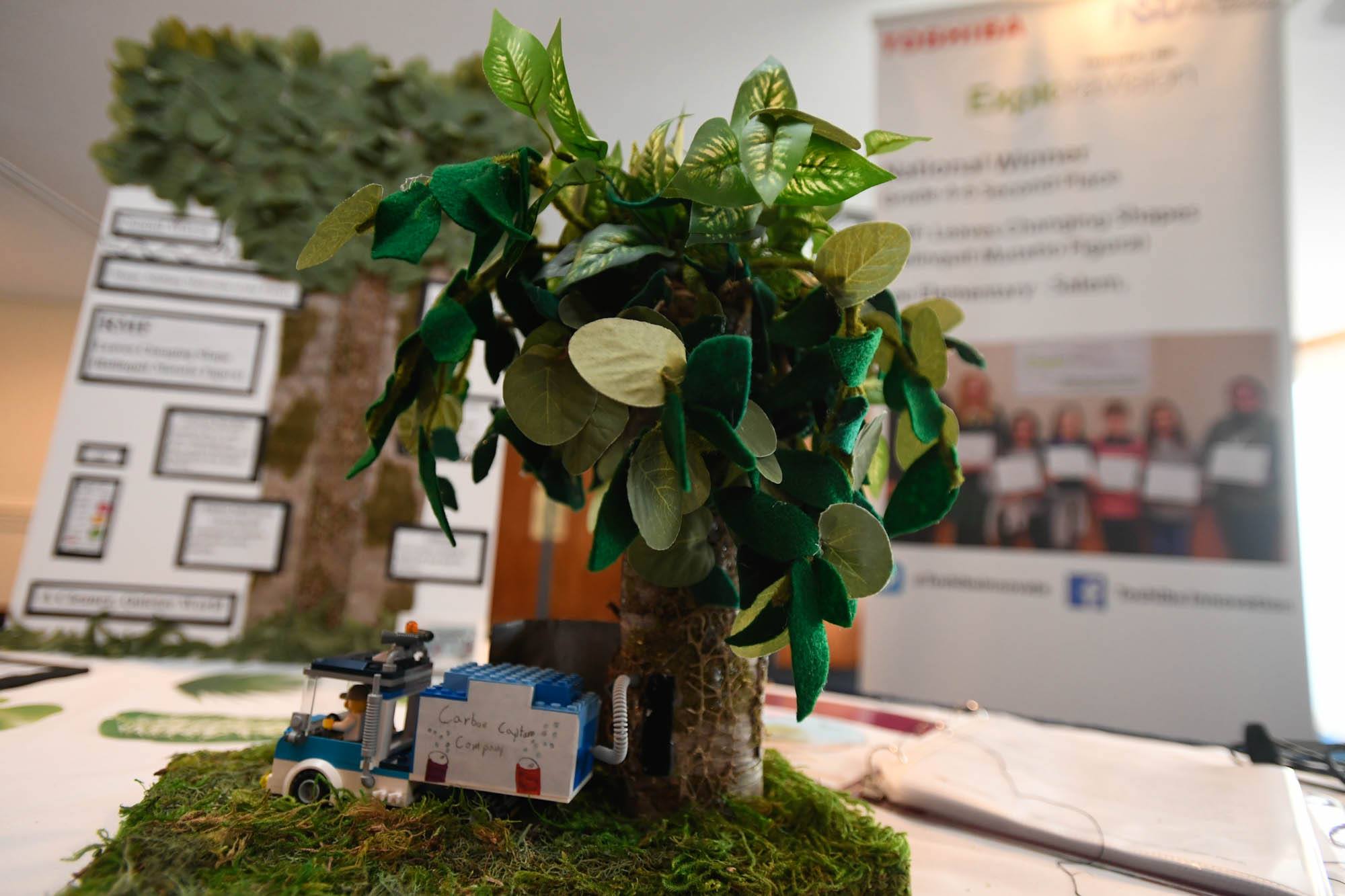Connecting Science Class to the Real World with ExploraVision
I have taught science in public schools for thirty-five years and one of the most rewarding parts of my professional life has been participating in the Toshiba/NSTA ExploraVision science competition with my students. For those unfamiliar with the program, ExploraVision engages K-12 students in real-world problem solving with a strong emphasis on STEM, challenging them to envision a new technology through collaborative brainstorming and research of current science. It’s an affordable venue for teachers and schools looking to help their students develop an innovation mindset, as well as important skills like writing, research, communication and presentation skills.
ExploraVision in the Classroom
As an ExploraVision coach and mentor, I guide teams of two, three, or four students as they pick a current technology, research it, imagine what it might look like in the future, and finally, describe the scientific breakthroughs needed to make that technology a reality. I love the program because it encourages students to identify the issues our world is currently facing, and think critically about the ways that science, technology, engineering and mathematics could improve or solve these problems in the future. It truly connects the subjects we cover in science class with their implications in the real world.
It’s no surprise that the three students I mentored during the 2020-2021 ExploraVision program were interested in exploring the science behind vaccines and their efficacy. We were thrilled when Toshiba and NSTA awarded us with an Honorable Mention in the 10-12th grade-level category for their project “TELKES: The Future of Vaccine Preservation and Transport!”
A Word from my ExploraVision Students
ExploraVision is the first national competition that my three ExploraVision students participated in, and it truly changed their lives. But don’t take my word for it—here’s how they expressed their experience to me:
- “ExploraVision gave us the opportunity to explore research without the need of a lab. We were also able to connect with experts in the field of thermoelectricity around the country and the world. We enjoyed this experience and the flexibility it gave us.”
- “ExploraVision was an amazing experience, getting to meet great people who helped us with our project and teaching us new things. Being able to learn new concepts and apply our learning to solve major problems in the future was a great way to explore real-world issues.”
- “ExploraVision exposed me to the level of dedication and passion required to reach a goal. With the guidance of our teacher, this cooperative experience gave me an incredible chance to improve my skills in research, time management, and deepen my interest in research.”
Thank you to the Toshiba/NSTA ExploraVision science competition for fostering a lifelong love of STEM and innovation in my students through your time-tested program!
How Educators Can Get Involved in ExploraVision
If you are interested in implementing the Toshiba/NSTA ExploraVision science competition in your classroom, the ExploraVision website has many great resources to help you get started. In the For Teachers page, you’ll find everything you need to introduce the program in your virtual or in-person classroom successfully. You can browse through sample ExploraVision projects and educational videos, and even download lesson plans, program timelines and brochures to guide you through every step of the process.
About the Author
Richard Kurtz is a science teacher at Commack High School, where he works with students in all areas of science and engineering as they prepare for college. He has taught science in public schools for thirty-five years, and one of the most rewarding parts of his professional experience is participating the Toshiba/NSTA ExploraVision science competition with his students. This year, his student team received an Honorable Mention for their project “TELKES: The Future of Vaccine Preservation and Transport.”

